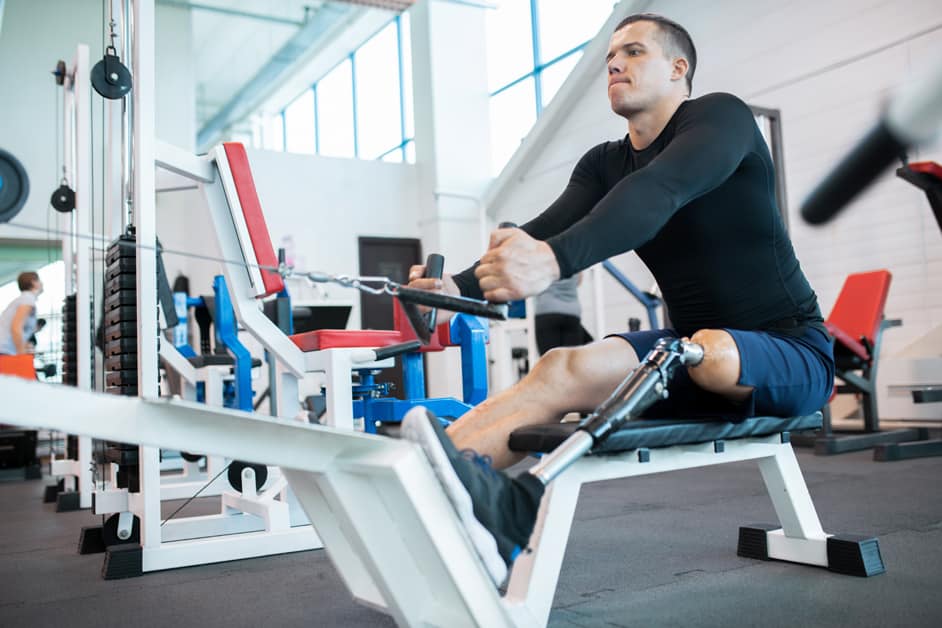Introduction
If you get knee pain after playing basketball, you need to modify your basketball routine. This guide will show you how to do this safely and effectively. It’ll cover stretches, strength training and cardiovascular exercises. Plus, it’ll explain the science behind why certain exercises can help prevent injury. There are also recommended resources for readers who want more info.
So, this guide will help you understand how certain drills can stop knee pain from physical activity or medical conditions.
Modifying Basketball Workouts for Joint-Friendly Exercises
Are you in pain in your knee? You may be wondering how to adapt your basketball workout so it’s kinder to your joints. Remember, playing basketball can be tough on your joints – if your knee is hurting, you shouldn’t just start playing right away. Here’s a few ideas to make your workout more joint-friendly. Have a look!
Warm Up Exercises
Warm up exercises are essential for basketball players. They reduce the risk of injury, and improve physical performance. Exercises include low-impact activities such as jogging, cycling, and stretching with light resistance bands. This prepares the body for impact and avoids injury. Heat from the warm up helps muscles work better. And it lowers the chance of muscle strains or tears. Plus, blood flow to joints is stimulated. This helps prevent chronic joint pain or injury.
A proper warm up should take 10 minutes. It can be personalized for a player’s age, experience level and physical limitations:
- Age
- Experience level
- Physical limitations
Lower Body Exercises
Lower body exercises are essential for a successful basketball workout. But, traditional lower-body training can cause joint issues like chronic pain and injury. To avoid this, modify your workout. Replace some regular exercises with joint-friendly ones. Focus on balance and stability to protect knees.
Choose activities with limited impact on joints such as Pilates or bodyweight squats and lunges. Lightweight movements like lateral bounds and power skipping build leg power. Other joint-friendly moves like calf raises, single leg bridges, monster walks, lateral lunges, and mini band ankle marches help strengthen muscles throughout the leg.
These modified moves are simple, yet effective. Make sure form is correct. Stretch for several minutes afterwards to promote proper flexibility and joint health. This will give you long-term results when basketball season begins.
Core Exercises
Basketball needs speed, leaping and power. To reach your full potential you need aerobic and anaerobic exercises, skill development and core strengthening. When picking exercises to improve basketball performance, pick low-impact, joint-friendly exercises that match the demands of the sport. Train for your specific needs so that how you move on the court matches how you train off it.
Core training is key to gain muscle activation control when doing passes and shots. Core exercises like
- torso rotations
- side planks with hip abduction
- step backs from low squat position
- lunges with upper body rotation at various angles
are important to target obliques. Additionally, combine plank variations with stability ball and bosu ball activities to create an unstable environment. Muscles must work together to keep balance while doing presses or other rotational movements. Focus on good form while implementing these core exercises into your program to get the most benefits.
Upper Body Exercises
Upper body exercises are vital for a basketball workout. Traditional moves can cause knee strain and pain. Here’s how you can modify your workout for joint-friendly exercises:
- Pushups: Get onto a bench or box. Place your hands at shoulder width. Perform pushups with your feet still on the ground.
- Shoulder Presses: Use dumbbells instead of a barbell. Position arms wider than shoulder-width apart.
- Chest Flyes: When doing chest flyes with dumbbells, keep legs bent at 90 degrees. Keep elbows close to your sides. Use lighter weights.
- Lateral Raises: Don’t bend at the waist. Keep spine straight. Bend both legs slightly at 90 degrees. Maintain posture throughout.
These modified arm exercises should help ease knee pain. They will also help achieve an effective basketball workout routine. This targets important arm muscles needed for shooting game shots!
Balance Exercises
Balance exercises are essential to reduce strain on your joints & prevent injuries. To improve balance, stand on one leg or walk heel-to-toe for 10 steps. You can also do ‘C‘ shaped movements with your ankles, stand in a staggered stance, or do “A” skips between two fixed points (like cones). Do these after running drills.
One-legged squats using a pole or wall is another exercise. It helps build strength & stability in the lower body, coordination & balance. Plus, it builds muscle endurance in the legs & core, & improves ankle mobility – all important for basketball training.
Do multi-directional drills to work on quickness, agility & efficiency while improving coordination. Rapid sideways movement with light hopping or jumping movements can add variety to court speed drills. Do these exercises at least 3 times per week for joint protection during basketball practice sessions.
Knee Pain Prevention
Suffering from chronic knee pain? Essential to modify your basketball workout. Include knee-friendly exercises. Injuries can hinder training and performance. But with the right preventative measures, stay active and reduce risk of knee pain. Here’s how: modify basketball workout for joint-friendly exercises. Better protect your knees.
Strengthening Exercises
Focus on strengthening muscles that support the knee. These include quadriceps, hamstrings, and calves. Start with bodyweight exercises such as squats, lunges, and step-ups. Then move to dynamic gym machines. Slow, controlled movements are best for strength and stretching.
- Seated leg extensions on machines are good for quads. Do 10 reps per leg.
- For hamstrings, single-leg deadlifts with a moderate weight can help. Always consult a pro first.
- Calf raises on flat surfaces or staircases are great for all calf parts. Add some spice with ankle weights or resistance bands.
- Single-leg bridges are a must for targeting knee muscles. These help relieve pain from patellar tendonitis. Aim for 30 second holds before slowly releasing feet.
Stretching Exercises
Stretch those muscles! Keep your joints healthy and strong. People with knee pain should especially focus on the quadriceps and hamstrings. These are the muscles located on the sides of your thigh. Strong legs provide stability to the knee joints.
Before exercising, warm up those muscles. Do some simple exercises like walking, jogging or riding a stationary bike for a few minutes.
Quadriceps:
- Lie down on your stomach. Bend one leg behind you and keep the foot flat.
- Grab your ankle with one hand and pull back until you feel a stretch.
- Hold for 10-15 seconds.
- Repeat with the other leg.
- Do this 3-5 times for each leg.
Hamstring:
- Sit on the floor, legs straight out in front of you.
- Bend from your waist towards your feet until you feel a stretch.
- Hold for 10-15 seconds.
- Do 3-5 times.
Foam Rolling
Foam rolling is a must for any workout routine. Especially if you have knee pain. It loosens tight muscles around your hips, legs, and joints. This can help ease knee discomfort.
To use a foam roller, lie on it and use your bodyweight to control the pressure. Roll back and forth on any tight areas that may be causing knee joint pain. Foam rolling can reduce tension and ease pain, but not put strain on the joint.
If you feel sharp or throbbing pains when foam rolling, stop immediately. Contact a doctor or physical therapist for advice. They will recommend exercises for you and show you how to stay safe and prevent joint injury.
Conclusion
When altering your basketball workout to be joint-friendly with knee pain, it is important to select low-impact movements. It is best to listen to your body and adjust your workout accordingly.
Changing your basketball workout with knee pain can be difficult. However, you can still create an effective workout without straining the knee joint. Limit weight bearing activities like jogging or jumping, and replace them with low-impact movements like swimming or cycling.
Strength training exercises that work the core and lower body muscles can help build strength and stability for heavy duties. Lastly, always stretch before and after each workout to reduce tension on the muscles around the knee joint and decrease the risk of injury.
Frequently Asked Questions
Q: What exercises should I do if I have knee pain?
A: If you are experiencing knee pain, you should focus on exercises that strengthen the muscles around your knee, such as squats, step-ups, lunges, and glute bridges. You should also include low-impact cardio exercises such as walking, swimming, and cycling.
Q: How often should I do these exercises?
A: That depends on your individual condition. You will need to consult with a doctor or physical therapist to determine the best frequency and intensity for your particular situation. Generally speaking, you should aim to do the exercises at least three days a week, but it is important to listen to your body and adjust the intensity and frequency as needed.
Q: What should I avoid when exercising with knee pain?
A: You should avoid any exercises that involve jumping or running, as these can put too much stress on your knees. Additionally, it is important to avoid any exercises that cause pain or discomfort. If you experience any pain while exercising, it is best to stop and consult with a doctor or physical therapist.





